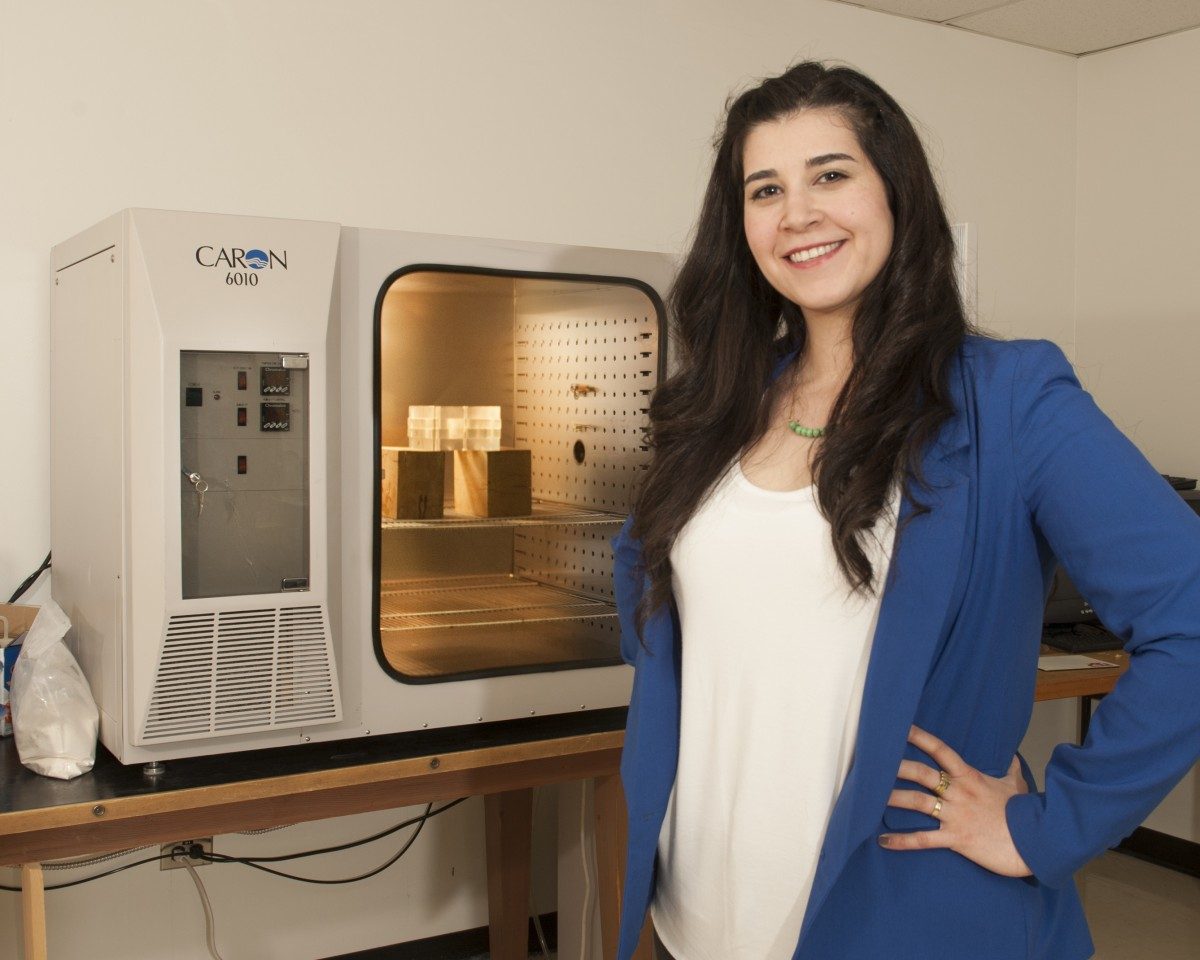
Dr. Filiz Koksel has joined the Department of Food Science. Photo: Mike Latschislaw
New food scientist returns to her roots
Filiz Koksel has come full circle. We caught up with the newest assistant professor in the Department of Food Science to learn about her journey back to her birth city.
Tell us about your journey back to Winnipeg.
I was born in Winnipeg, but lived most of my life in Ankara, Turkey, until I came back to Winnipeg for graduate school. I undertook my undergraduate and M.Sc. degrees at Turkey’s number one ranked educational institute, Middle East Technical University. I returned to Manitoba for my doctorate and recently graduated with a Ph.D. from the University of Manitoba’s Department of Food Science.
I always wanted to come back to Canada for graduate school. Towards the end of my M.Sc. degree, I found myself quite interested in cereals. I guess the passion for studying cereals runs in our family. My father who introduced me to the world of cereals is a cereal scientist himself. My father had his M.Sc. degree in Food Science from the University of Manitoba. I always thought that the U of M is one of the best universities in the world to study cereal science and technology.
Cereal science sounds interesting – what did you study?
During my M.Sc. in food engineering, I studied mechanical properties of gluten-free baked goods. The project was about developing new products using a novel heating technology (a microwave-infrared combination oven) and investigating the shelf life of these baked goods.
During my Ph.D., I studied the effects of the mixing and extrusion processes on the bubbly structure of bread doughs, under the supervision of Dr. Martin Scanlon. Martin introduced me to techniques, such as X-ray microtomography, low-intensity ultrasound, that are not very commonly employed in food science, opening my eyes to interdisciplinary areas of research besides the traditional. He is an exemplary advisor who has a very big influence on how my career shaped.
After my Ph.D., I took a post-doctoral fellow position at the University of Manitoba in collaboration with the University of Saskatchewan Food and Bioproduct Sciences Department. I studied the salt-water-gluten protein interactions in bread doughs during mixing and fermentation.
During my 2nd post-doctoral fellowship which was also at the U of M, I investigated the influence of genotype, crop growing environment and their interactions on wheat processing quality for breadmaking. I learned most of what I know about Canadian wheat from Dr. Harry Sapirstein.
Tell us about your research at the Canadian Light Source.
Our work at the Canadian Light Source’s Biomedical Imaging and Therapy Beamline (located in Saskatoon, SK) was all about bubbles in bread dough. Bread owes its appeal mainly to the quality of its aerated structure and a good aerated structure depends directly on the bubbles in the bread dough. So if we can determine the bubble sizes in the dough at earlier stages of the breadmaking process, then we can predict how the resulting bread will turn out before bread is fully manufactured. But there are billions of tiny bubbles in bread dough and these tiny bubbles are very fragile.
My research challenge during my Ph.D. was figuring out how to measure the sizes of these tiny, fragile bubbles without destroying my dough sample. And that is how X-rays from a synchrotron source came into my story. The X-ray techniques we used are similar to a head CT scan in principle, so that we can see what is inside the dough without destroying the bubbles. For many people, it is really surprising how much science goes into food science and technology. In summary, the project at the Canadian Light Source focused on the fundamentals of bubbles and how they change over time. In the future, with these bubble detection techniques, I would like to be able to control the quality of tomorrow’s bread. In addition, I would like to apply this knowledge to not only increase the intake of fiber through consumption of baked goods but also cut back on fat, sodium, additives and chemicals in cereal based foods.
Typical work day?
I try to divide my work day into three: research, teaching and service. A big chunk of my time is spent on research (keeping up with relevant literature, publishing papers, etc.), since I am not teaching this semester. As a young scientist, I spent a lot of time in the laboratory as well. For students, I have an open door policy.
What do you do when you’re not at work?
When indoors, I like hanging out with friends, watching movies and playing board games. When outdoors, I like ice skating, dancing and listening to live music performances. I try to catch a music festival every year.







I am fascinated about your career achievements.